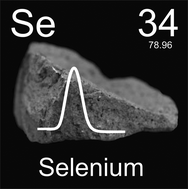
Detection of selenium using graphite-based sensors
Researchers from the Manchester Metropolitan University reported the first example of graphite-based sensors to detect selenium in drinking water.
Selenium is a trace mineral nutrient essential as for all animals, but it is extremely toxic if the intake dose exceeds 400 µg per day. Both the European Union and United States Environmental Protection Agency (EPA) have set the limits for selenium in drinking water to of 10 µg/L and 50 µg/L respectively.
Today, the gold-based electrodes which are traditionally used to detect selenium are very expensive. With this work, Craig Banks and his group address the problem proposing a graphite based sensor to detect selenium in water. They fabricated special screen-printed graphite electrodes and detected low concentrations of selenium in their laboratory tap water, with a limit of detection which fell below those set by the EPA. According to the authors, this new graphite-based sensor could represent an appealing alternative to the gold based electrodes currently used.
To know more about this work, click on the link below. This paper will be free to read until January 24th.
Electroanalytical sensing of selenium(IV) utilising screen printed graphite macro electrodes
Athanasios V. Kolliopoulos , Jonathan P. Metters and Craig E. Banks
Anal. Methods, 2013, Advance Article
DOI: 10.1039/C2AY26041G










